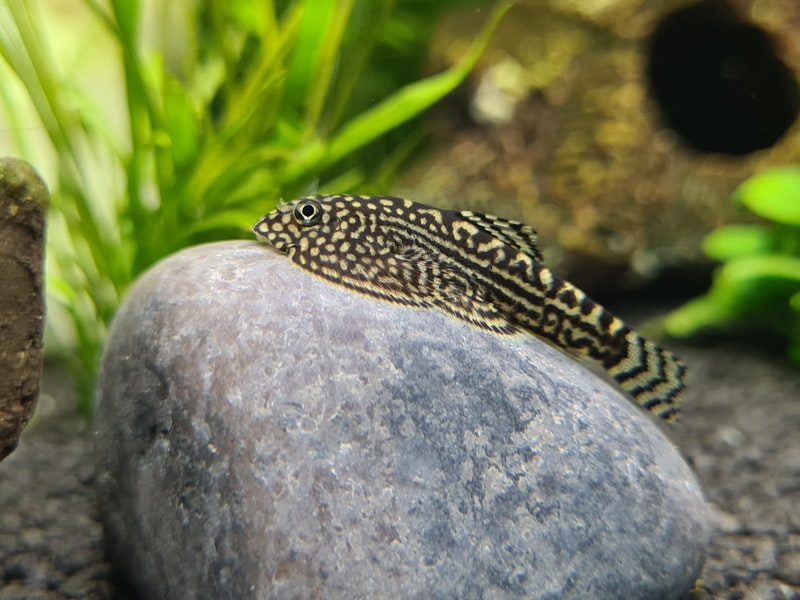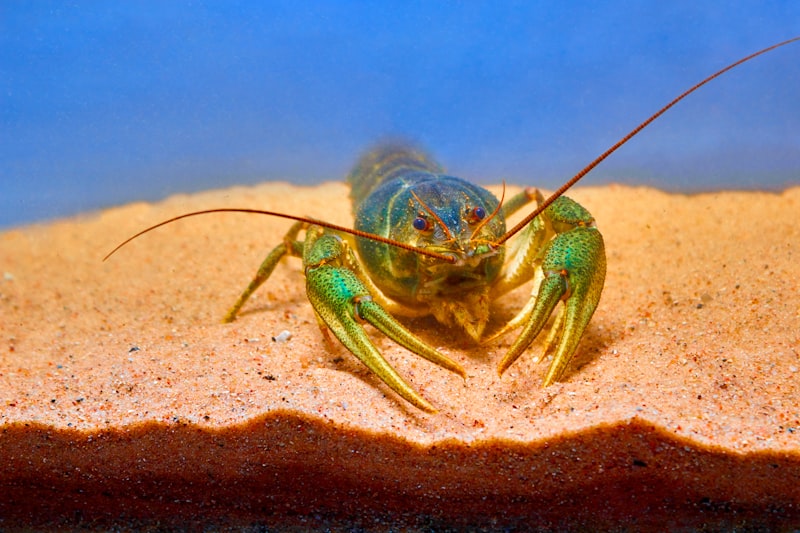Firstly, choosing the right tank size is crucial. Larger tanks provide more stable water conditions and room for fish to thrive. Consider factors like available space and the types of fish you wish to keep.
Next, selecting suitable equipment is key. A reliable filter is essential to maintain water quality by removing debris and harmful chemicals. Additionally, a heater ensures consistent water temperature, vital for the health of tropical fish.
Now, onto substrate and decorations. Gravel or sand substrate not only anchors plants but also creates a natural environment. Rocks, driftwood, and artificial plants provide hiding spots and mimic a natural habitat, reducing stress for fish.
Water quality is paramount. Use a water conditioner to remove chlorine and chloramine from tap water before adding it to the tank. Testing kits help monitor ammonia, nitrite, and nitrate levels, ensuring a safe environment for fish.
Introducing fish requires careful consideration. Start with hardy species that tolerate fluctuations in water parameters, gradually adding more sensitive fish once the tank matures. Research each species’ requirements regarding water temperature, pH levels, and compatibility.
Maintaining your aquarium involves regular tasks. Perform partial water changes weekly to remove accumulated waste and replenish essential minerals. Clean the tank glass, equipment, and replace filter media as needed to keep water clear and healthy.
Lastly, enjoy observing your aquatic community thrive. Aquarium keeping is not just about maintaining water quality but also appreciating the beauty and behavior of your fish. With proper care and attention, your freshwater aquarium will flourish into a stunning centerpiece of your home.
Step-by-Step: Creating Your Perfect Freshwater Aquarium Setup
Setting up a freshwater aquarium can be an exciting venture, bringing a slice of aquatic life into your home. Whether you’re a beginner or a seasoned hobbyist, crafting the ideal environment for your fish requires careful planning and attention to detail. Here’s a step-by-step guide to help you create the perfect freshwater aquarium setup.
Firstly, consider the size of your aquarium. Larger tanks offer more stability in water parameters and provide ample space for fish to thrive. Choose a tank size that fits your space and budget while keeping in mind the type and number of fish you intend to keep.
Next, select a suitable location for your aquarium. Avoid direct sunlight to prevent algae growth and temperature fluctuations. Ensure the surface can support the weight of the tank and consider accessibility for maintenance tasks.
Now, it’s time to set up the essentials. Begin with a sturdy aquarium stand or base. Rinse your chosen substrate thoroughly to remove dust and debris before carefully adding it to the tank. Substrate options vary from gravel to sand, each influencing water chemistry and aesthetics differently.
Install a reliable filtration system to maintain water quality. Filters help remove debris and toxins, promoting a healthy environment for your fish. Choose a filter suitable for your tank size and consider additional options like aeration for enhanced oxygenation.
Introduce decorations and plants to enrich the aquarium environment. Rocks, driftwood, and artificial plants provide hiding spots and mimic natural habitats. Live plants not only enhance aesthetics but also contribute to water quality by absorbing nitrates.
Once your setup is complete, slowly fill the aquarium with dechlorinated water to avoid stressing your fish. Use a thermometer to monitor water temperature and adjust as necessary to ensure optimal conditions for your aquatic friends.
Lastly, cycle your aquarium before adding fish. Cycling establishes beneficial bacteria that break down waste products, crucial for maintaining a stable ecosystem. Monitor water parameters regularly and perform partial water changes to keep conditions pristine.
Creating your perfect freshwater aquarium setup requires patience and attention to detail, but the rewards are well worth the effort. Dive into the world of aquascaping and enjoy the tranquility of your underwater oasis!
Essential Equipment: What You Need to Start Your Freshwater Tank
First and foremost, every successful tank begins with a sturdy aquarium. Consider the size carefully, as it dictates the number and types of fish you can keep. A larger tank offers more stability in water parameters and provides ample swimming space for your aquatic friends.

Next, filtration is key to maintaining water clarity and quality. Opt for a reliable filter that suits your tank size. Filters not only remove debris but also cycle the water, ensuring a healthy environment for your fish by eliminating harmful toxins.
Lighting plays a significant role, especially if you plan to cultivate live plants. LED lights are energy-efficient and offer customizable settings to simulate natural daylight cycles. This not only enhances the visual appeal of your tank but also supports plant growth, creating a natural habitat for your fish.
Heating is essential for tropical fish species that require stable water temperatures. Choose a heater with adjustable settings to maintain optimal warmth, ensuring your fish remain comfortable and healthy.

Substrate is more than just aesthetics; it provides a foundation for plants and beneficial bacteria. Choose gravel or substrate specifically designed for freshwater tanks, as they promote plant growth and facilitate nutrient absorption.
Decor and hiding spots are vital for fish to feel secure. Driftwood, rocks, and artificial plants not only enhance the tank’s visual appeal but also provide shelter and territorial boundaries for your aquatic pets.
Lastly, water testing kits are indispensable for monitoring water parameters such as pH, ammonia, nitrite, and nitrate levels. Regular testing helps prevent water quality issues and ensures a stable environment for your fish to thrive.
By investing in these essential pieces of equipment, you’re laying a solid foundation for a successful freshwater tank. Each component plays a critical role in creating a balanced ecosystem where your fish can flourish. So, gather your gear, set up your tank, and embark on a rewarding journey into the vibrant world of freshwater aquariums.
Choosing Fish for Your Freshwater Aquarium: A Beginner’s Guide
So, you’ve decided to dive into the world of freshwater aquariums – that’s fantastic! One of the most exciting parts of setting up your aquarium is selecting the fish that will call it home. But where do you start? Here’s a handy guide to help you choose the right fish for your freshwater setup.
First things first, before you start picking out fish, it’s essential to understand your aquarium setup. Consider factors like the size of your tank, the water parameters (pH, temperature, hardness), and any special equipment you have, such as filters and lights. Different fish have different requirements, so knowing your setup will guide your choices.
When selecting fish, compatibility is key. Some species are peaceful and get along well with others, while some may be aggressive or territorial. Research the temperament and behavior of each species you’re interested in to ensure they will coexist peacefully in your tank. For beginners, community fish like tetras, guppies, and platies are usually a good starting point due to their peaceful nature.
Another aspect to consider is maintenance. Some fish require more care and attention than others. For beginners, hardy fish that are tolerant of varying water conditions and are easy to feed are ideal. Examples include livebearers like mollies and swordtails, as well as bottom-dwellers like Corydoras catfish.
A well-balanced aquarium is visually appealing and interesting to observe. Consider adding fish that occupy different levels of the tank – top-dwellers, mid-dwellers, and bottom-dwellers. This variety not only adds aesthetic appeal but also ensures that all areas of your tank are utilized.
It can be tempting to fill your aquarium with a variety of colorful fish, but overcrowding can lead to stress, aggression, and poor water quality. As a rule of thumb, only introduce a few fish at a time, allowing your tank to establish a natural balance. Monitor your fish regularly and be prepared to upgrade to a larger tank as they grow.
Choosing the right fish for your freshwater aquarium is an exciting journey that requires careful consideration and planning. By understanding your aquarium setup, selecting compatible species, considering maintenance needs, adding variety, and avoiding overstocking, you’ll create a thriving aquatic environment for your new finned friends. Enjoy the process of building and maintaining your aquarium, and remember, each fish you choose adds its own unique charm to your underwater world.
From Plants to Decor: Designing a Stunning Freshwater Habitat
Plants are not merely decorations but essential contributors to a thriving freshwater environment. They oxygenate the water, provide shelter for fish, and create a natural aesthetic that transforms any space into a tranquil retreat. From vibrant green Anubias to delicate Cabomba, each plant adds its unique texture and color palette, enhancing the visual appeal while maintaining water quality.
Choosing the right flora involves understanding their growth requirements and compatibility with fish species. Hardy plants like Java Fern and Amazon Sword are perfect for beginners, requiring minimal maintenance while offering maximum impact. For a more advanced setup, carpeting plants such as Dwarf Baby Tears create lush foregrounds, mimicking a natural riverbed.
Incorporating driftwood and rocks not only complements the plants but also provides natural hiding spots and territories for fish. Imagine a piece of Malaysian driftwood resembling a tree branch, surrounded by dense Ludwigia and Vallisneria—a scene straight out of a freshwater paradise.
Fish selection is crucial for maintaining a balanced ecosystem. From the majestic Betta splendens to the playful Tetras and Corydoras catfish, each species interacts with plants and contributes to the habitat’s overall dynamics. Their movements among the foliage add life and vibrancy, turning your aquarium into a captivating spectacle.
Creating your freshwater oasis involves patience and a keen eye for detail. Regular maintenance, such as pruning plants and monitoring water parameters, ensures longevity and health. Remember, every element—from the choice of plants to the arrangement of décor—plays a part in crafting a stunning underwater landscape that captivates and inspires.
Frequently Asked Questions
How do I cycle a freshwater aquarium
Learn how to cycle a freshwater aquarium efficiently with our concise guide. Discover the steps to establish a healthy nitrogen cycle, ensuring optimal conditions for your fish and aquatic plants.
What equipment do I need to set up a freshwater aquarium
Discover the essential equipment required to set up a freshwater aquarium efficiently with our concise FAQ guide. Learn about the must-have items that ensure a successful start for your aquatic environment.
What are common mistakes to avoid when setting up a freshwater aquarium
Learn how to avoid common mistakes when setting up your freshwater aquarium with our concise guide. Discover essential tips to ensure a successful setup, from choosing the right tank size and location to properly cycling the tank and selecting compatible fish. Avoiding these mistakes will help maintain a healthy aquatic environment for your fish.
What are the best fish for beginners in a freshwater aquarium
Discover the ideal fish species for beginners in freshwater aquariums with our concise guide. Learn about easy-to-care-for fish that thrive in beginner setups, ensuring a successful and enjoyable aquarium experience.
How often should I change the water in my freshwater aquarium
Discover how frequently you should change the water in your freshwater aquarium for optimal fish health and water quality. Learn the recommended schedule to maintain a balanced aquatic environment.



[…] Guide to Setting Up a Freshwater Aquarium […]
[…] Guide to Setting Up a Freshwater Aquarium […]
[…] Guide to Setting Up a Freshwater Aquarium […]
[…] Guide to Setting Up a Freshwater Aquarium […]
[…] Guide to Setting Up a Freshwater Aquarium […]
[…] Guide to Setting Up a Freshwater Aquarium […]